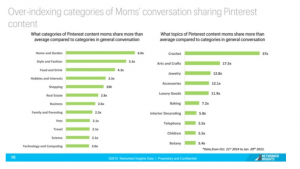Mobile marketers, you’ve been given a free pass over the past couple of years, but I’m here to tell you that pass has expired. With app marketing in its elementary years, it became acceptable to “push and pray”; i.e. send out mobile messages to users without any real testing, and hoping for solid engagement.
And sure, you can gauge some measure of success based off of swipe-through and conversion rates, but you’re missing out on a crucial opportunity to optimize. My point is simply this; as marketers, we A/B test everything from homepage copy to email subject lines plus everything in between. Your mobile app marketing campaigns are no exception to this rule. Always be testing.
So without further ado, here are 5 easy mobile app marketing A/B tests to get you started:

1. Copy
What’s in a word? Everything when it comes to messaging campaigns. How you phrase your message is just as important as the message itself. Make sure your text is compelling, with action-oriented verbs. Beyond that, here are some ideas for A/B testing:
- Question versus non: Phrasing a headline as a question has long been a successful click-through tactic for blogging, so why not try it for push notifications?
- Length: Sometimes less is more. Try testing copy that is 10 words and under versus 10 or over.
- CTA: We all know how important a compelling CTA is, and A/B testing is a great way to figure out which phrase translates into an uptick.

2. Imagery
I’m going to go ahead and assume that you’re taking advantage of rich push, given that it’s soon to be the industry standard. But how can you make the message even more compelling? Better imagery.
Different images resonate for different audiences. It’s up to you to figure out what that imagery entails. Does a picture of your product work? Or is a lifestyle image better? Does your audience respond to GIFs, or do they prefer a more serious undertone? How about video? As you can see, there’s a plethora of ways to test out the rich part of rich push, and you should be doing so on the regular.

3. Emojis
This one is pretty straight forward. Emojis are known to boost user engagement and click-through rates. Of course, they’re not right for every brand and should only be used contextually; where it makes sense to do so.
For an A/B Test, keep your copy the same but include an emoji in one to gauge if you see a lift or not.
4. Deep Links
Deep linking is the practice of driving users to a specific page within your app when a user clicks-through your message. Test out deep linking to different places within your app and monitor which boosts conversion.
For example, if you’re a retail app promoting a new deal, test out deep linking directly to the product versus to the catalogue homepage to see which drives better results.

5. Personalization
You knew this one was coming. Mobile is innately personal, so your messaging should follow suit. Sure, including a user’s name in a push is technically personalization, but you should move beyond that and focus on their unique in-app events and preferences.
If you’re a news app, you could test sending a relevant news story based on topics a user follows against a related story to the last news article they consumed while in app. Or if you’re an entertainment app like Netflix, you can let users know about a new show they may like based on their viewing habits.
There you have it, five easy A/B tests to get you up and running. A few things to note with A/B testing:
You upticks will be small, but they add up over time. Unless some abomination is happening with your mobile messaging right now, odds are the lift you see between test A and B will be marginal. But these marginal increases add up over time, and will help you achieve truly engaging mobile marketing.
You need a control group. As our PMM Aaron discusses here, control groups are crucial to effective A/B testing. Why? They’re your baseline. You know the old expression, no news is good news? The same applies to mobile messaging. There are certain instances where the users who receive no messaging outperform those who do. If this is the case for you, you’d never know it without a control.
Digital & Social Articles on Business 2 Community
(62)







